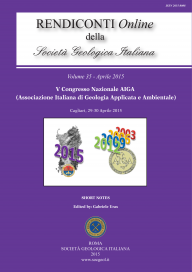
Anthropic impact on thermal aquifer: the case study of the Euganean Geothermal Field (NE Italy)
Marco Pola (a), Paolo Fabbri (a), Leonardo Piccinini (a), Enrico Marcolongo (a), Alessia Rosignoli (a), Dario Zampieri (a), Aldo Roghel (b), Silvia Onisto (b) & Enrico Zampieri (b)
(a) Dipartimento di Geoscienze, Università degli Studi di Padova. Via G. Gradenigo, 6. 35131. Padova. Italy. E-mail address corresponding author: marco.pola@unipd.it
(b) Gestione Unica del B.I.O.C.E. Via Pietro d'Abano, 18. 35031 Abano Terme (PD). Italy.
Volume: 35/2015
Pages: 240-243
Abstract
The Euganean Geothermal Field represents an important natural and economical resource for Veneto region (NE Italy) and its thermal water is mainly used for balneotherapy. Approximately 170 wells exploit 14*106 m3/y of hot water (temperature from 65°C to 86°C) from rocky aquifers located at different depths. The potentiometric level of the most exploited 300-500 m deep aquifer has been monitored by a network of abandoned wells since 1975, and the exploitation has been monitored since 1979. The analysis of the level evidences an anthropic annual regime related to the touristic seasons and characterized by a decrease during spring and autumn (high rate of incoming tourists and high exploitation) and a recovery during winter and summer (low exploitation). In addition, a general increasing trend of the potentiometric level has been recorded since the 1990s and it can be related to the decrease of the exploitation. The time series showing the clearest relationship between level and flow rate is used to perform a black-box model using a Generalized Additive Model. The model estimates a natural potentiometric level of 15 m above the ground level, comparable with the level measured in a well far from the most exploited areas of the thermal field.
Keywords
Get Full Text